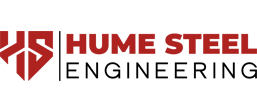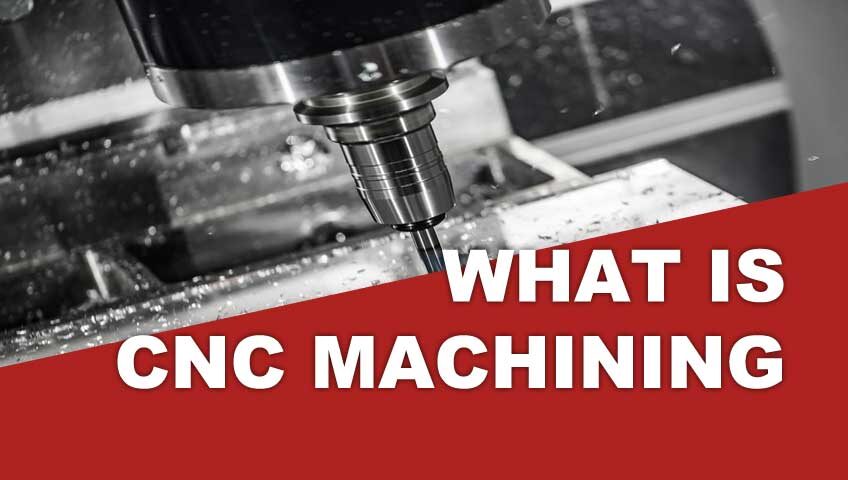CNC machining, or Computer Numerical Control machining, refers to a production technique in which industrial equipment and machinery are controlled by pre-programmed software application. The method may be utilized to operate a wide range of sophisticated gear, including mills, latches, and grinders. 3D cutting operations may be completed in a one set of instructions using CNC machining.
The movement of manufacturing tools and machinery is dictated by pre-programmed computer software. The CNC method overcomes — and hence replaces — the constraints of manual control, which requires live operators to direct milling tool orders via levers, wheels, and buttons. A CNC system may appear to the untrained eye to be a standard set of computer parts, but the console and software used in CNC set it apart from all other kinds of computation.
Learn more about CNC machining and CNC programming if you’re interested in using CNC manufacturing to make a variety of items. You may also want to understand about the various types of CNC machines and the types of jobs they can perform to determine whether they can satisfy your requirements.
How does CNC machining work?
When a CNC system is turned on, the required designs are programmed to software and sent to appropriate equipment and machines, which, much like a robot, carry out the dimensional duties as defined.
In CNC cutting, the numerical system’s code generator frequently assumes that steps are faultless, despite the potential of mistakes, which is increased when the machine is commanded to cut in more than one direction at the same time. A set of inputs called the part-program determines where a tool is placed in a numerical system.
Punch cards are used to input programming into a numerical controlling system. CNC machine programming, on the other hand, are input into computers through tiny keyboards. The program stays within the memory. As a result, CNC systems have considerably greater processing capability. Best of all, CNC machines are far from static, as fresh prompts may be included to current programs by modifying the code.
Programming CNC Machines
Machines in CNC production have a numerical control mechanism, which uses a software application to impact an item. The language underpinning CNC machining is known as G-code. It is used to regulate the feed rate, speed, and synchronization of a corresponding machine.
The technique has been embraced across the industrial industry as a result of these capabilities, and CNC manufacturing is especially important in the fields of metal and plastic manufacture. Learn more about the many types of machining systems that are utilized, as well as how CNC machine programming completely automates CNC production, in the sections below:
1. Machining Systems with Open/Closed Loops
Position control is decided by a closed loop or open loop system during the CNC manufacturing process. Signaling between the CNC controller as well as the motor is done in a single direction with the former. A closed-loop CNC system allows the controller to receive feedback, which allows for mistake correction. As a result, a closed-loop system can correct velocity and position anomalies.
Movement is generally directed across the X and Y axes in CNC machining. Stepper or servo motors, which repeat exact motions as defined by the G-code, are used to position, and guide the tool. The procedure can be conducted using open-loop control if the force and speed are low. Closed-loop control is essential for everything else to maintain the speed, consistency, and accuracy required for industrial applications like metalwork.
2. CNC Machining Is a Completely Automated Process
The manufacturing of parts using pre-programmed software is mostly automated in today’s CNC protocols. Computer-aided design (CAD) software is used to define the dimensions for a particular item, which is subsequently transformed into an actual final product using computer-aided manufacturing (CAM) software.
A range of tools, including as cutters and drills, may be required for any given workpiece. In order to meet these demands, many modern devices integrate several operations into a single cell. An installation might also consist of numerous machines as well as set of robotic hands, all controlled from the same program. Regardless of the configuration, the CNC process ensures component uniformity that would be difficult, if not impossible, to achieve by hand.
CNC Machines Come in a Variety of Shapes and Size
The first numerical control devices originate from the 1940s, when motors were used to control the movement of pre-existing tools for the first time. As technology progressed, analog computers and, eventually, digital computers were added to the machinery, resulting in the birth of CNC machining.
The most popular CNC-controlled operations are ultrasonic welding, hole punching, and laser cutting. The great majority of CNC arsenals nowadays are entirely electronic. Ultrasonic welding, hole-punching, and laser cutting are some of the most typical CNC-controlled operations. The following are the most often utilized machines in CNC systems:
1. CNC Milling Machines
CNC mills may execute programs that consist of number and letter prompts that guide parts over different lengths. A mill machine’s programming might be based on G-code, or a proprietary language established by a manufacturing team. A three-axis system (X, Y, and Z) is standard on mills, however most modern mills can accept three more axes.
2. Lathes
With indexable tools, parts are cut in a circular direction on lathe machines. Lathe cuts are made with precision and speed thanks to CNC technology. CNC lathes are used to create intricate designs that would be impossible to achieve with a manually operated machine. CNC-controlled mills and lathes have comparable control functions in general. Lathes, like CNC mills, can be controlled using G-code or proprietary code. Most CNC lathes, on the other hand, have only two axes: X and Z.
CNC lathes are used to create intricate designs that are impossible to achieve with manually operated equipment.
Plasma Cutting Machines
A plasma torch slices the material in a plasma cutter. The method is most commonly used on metals, although it may also be used on other surfaces. Plasma is created using a mix of compressed air gas and electrical arcs to provide the speed and heat required to cut metal.
Electric discharge CNC machines
Electric-discharge machining (EDM), also known as die sinking or spark machining, is a method that uses electrical sparks to mold workpieces into certain forms. Current discharges between two electrodes occur in EDM, and this eliminates portions of a workpiece.
The electric field gets more powerful and hence stronger than the dielectric as the space between the electrodes shrinks. A current can now travel between the two electrodes as a result of this. As a result, each electrode removes a part of the workpiece. The following are examples of EDM subtypes:
Water jet cutters
Water jets are CNC machining tools that use high-pressure water jets to cut hard materials like stone and metal. In certain situations, sand or another abrasive substance is added to the water. This method is frequently used to shape manufacturing machine components.
Water jets are used as a cooler option for materials that cannot withstand the high temperatures generated by conventional CNC machines. Water jets are used in various industries, including aerospace and mining, because of their cooling nature. They are used for carving and cutting, among other things. Water jet cutters are also used in applications that need highly delicate material cuts, as the lack of heat avoids any changes in the material’s fundamental characteristics that may occur with metal on metal cutting.
Final words
You can rely on CNC technology to manufacture an almost infinite variety of items fast and correctly since it can incorporate so many additional tools and components. For example, when complex cuts at various levels and angles on a workpiece are required, a CNC machine can do the task in minutes. While keeping these facts in mind, you can go for the best CNC Machine out there.

